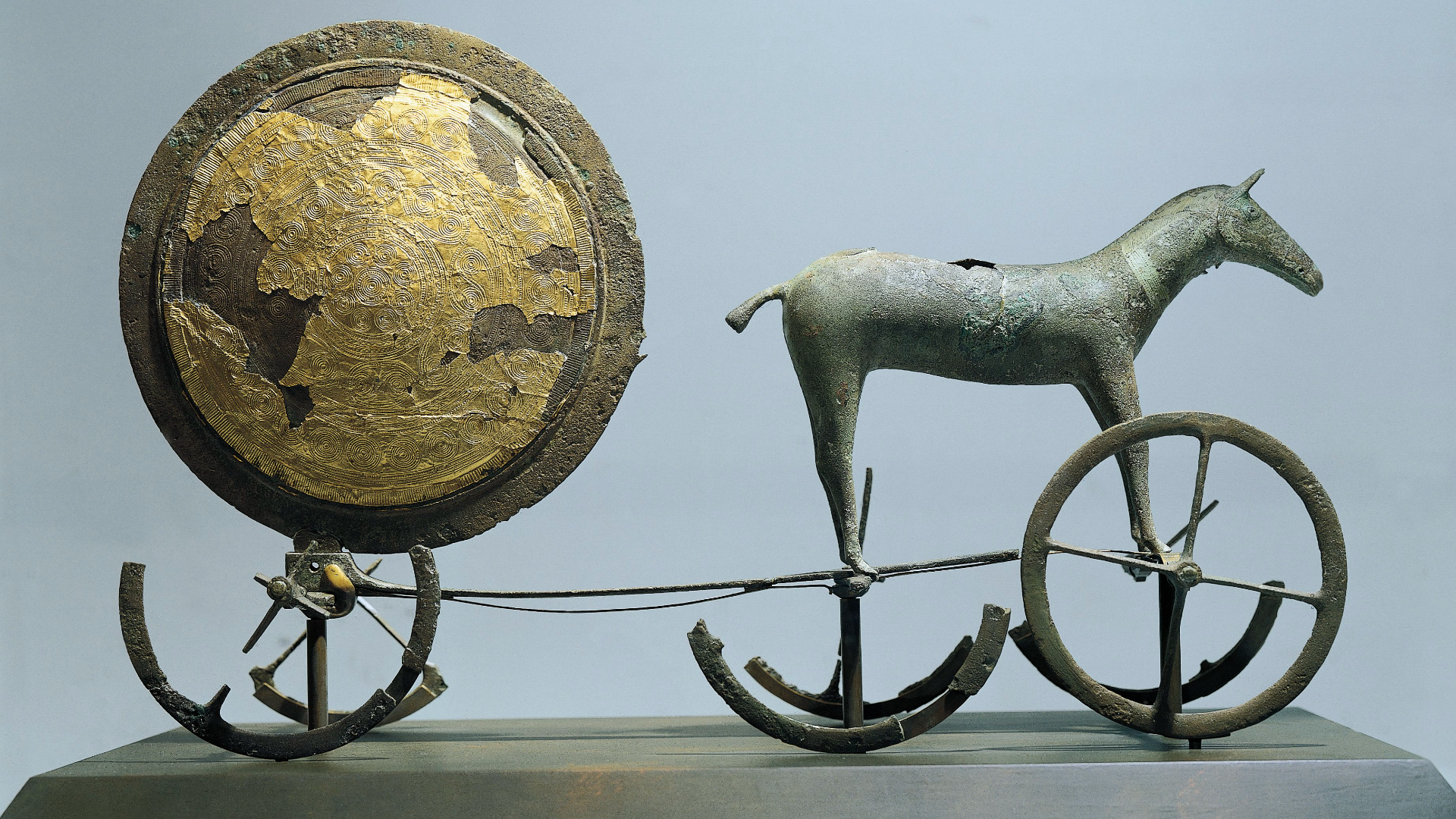Sun Chariot: An ornate Bronze Age treasure that may have featured in an ancient Nordic religious ceremony
This gold-covered bronze object may depict a "divine" horse pulling the sun behind it.

Name: Sun Chariot
What it is: A bronze and gold leaf diorama of a horse pulling a sun disk
Where it is from: Trundholm moor, in Zealand, Denmark
When it was made: Circa 1400 B.C.
Three centuries after horse-drawn chariots were introduced to Scandinavia, a Bronze Age artisan crafted the Sun Chariot, a stunningly detailed object that may represent an ancient mythological scene or even a rare calendar.
The Sun Chariot was discovered in 1902 by a peat farmer who was working on the Trundholm moor in Denmark, about 42 miles (67 kilometers) northwest of Copenhagen. It was found in numerous pieces and has since been reconstructed by experts at the National Museum of Denmark, where it is on display.
Taken as a whole, the bronze object is about 21 inches (54 centimeters) long and 14 inches (35 cm) tall. The large disk is covered in a thin layer of gold on one side and decorated with spirals, which are commonly found on Nordic Bronze Age artifacts, according to Flemming Kaul, curator of the prehistory collections at the National Museum.
Kaul has interpreted the artifact as representing a prehistoric Bronze Age idea of the voyage of the sun, as the divine horse pulls the sun across the heavens from east to west during the day and into the underworld at night. Spirals on the disk and the use of wheels may indicate the sun's constant journey, and the object may have been used by ancient priests to demonstrate the astronomical myth.
An alternative interpretation of the disk is that it represents a prehistoric calendar. In a 2006 study, Danish archaeologist Klavs Randsborg argued that there was an interesting mathematical pattern in the concentric circles on the disk, and he pointed out that the total number of ornamental designs on the gilded side of the sun is 52, or the number of weeks in a year. And a 2008 study by astronomers Rahlf Hansen and Christine Rink posited that the Sun Chariot was a movable calendar that could predict lunar eclipses.
In 2011, the Sun Chariot was put on the Danish 1,000-krone banknote. As of June 1, 2025, however, this banknote is no longer legal tender due to changes the Danish government is making to its cash currency.
Get the world’s most fascinating discoveries delivered straight to your inbox.

Kristina Killgrove is a staff writer at Live Science with a focus on archaeology and paleoanthropology news. Her articles have also appeared in venues such as Forbes, Smithsonian, and Mental Floss. Kristina holds a Ph.D. in biological anthropology and an M.A. in classical archaeology from the University of North Carolina, as well as a B.A. in Latin from the University of Virginia, and she was formerly a university professor and researcher. She has received awards from the Society for American Archaeology and the American Anthropological Association for her science writing.
You must confirm your public display name before commenting
Please logout and then login again, you will then be prompted to enter your display name.


